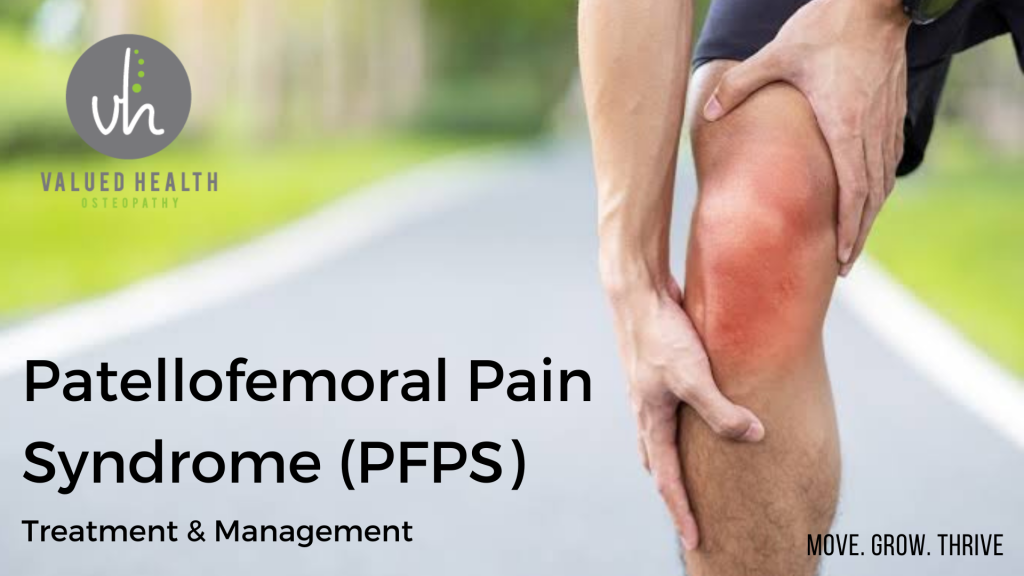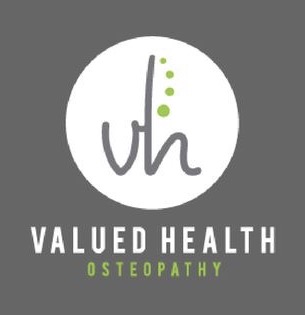Patellofemoral Pain Syndrome (PFPS).
Patellofemoral Pain Syndrome | A common cause of anterior knee pain.

Have you been experiencing knee pain that is located around the patella or behind it? Does the pain usually get worse when sitting for long periods or when you go upstairs? Then you may be experiencing a condition that is known as patellofemoral pain syndrome (PFPS).
Who gets Patellofemoral pain syndrome (PFPS)?
Patellofemoral pain syndrome (PFPS) is one of the most common knee conditions presented. It affects more women than men with 2:1 female being affected. It is commonly seen in those between the ages of 20-40. It also known as ‘runners knee’ as this is very common among runners and athletes.
What causes Patellofemoral pain syndrome (PFPS)?
The cause is still unclear however, it is believed that there are three major factors that contribute to the development of PFPS.
Poor patellar tracking and muscle imbalance – This usually involves muscle imbalances around the hip and knee that influence patella tracking and result in patellofemoral pain.
Overactivity and overload – increased workload on the knee as a result of increased activity or overload usually correlates with the development of PFPS.
Trauma – Structures around the knee and patellar can be subjected to trauma which can develop into PFPS.
Signs and symptoms of PFPS
- Unilateral or bilateral pain
- Gradual or acute pain
- Pain worse with squatting, running, prolonged sitting or using stairs
- Pain located around the patellar or behind it
- Usually achy but can be sharp pain
Treatment & management of
Patellofemoral pain syndrome (PFPS)
Treatment and management for PFPS usually follows a conservative approach with focus on reducing pain, improving patellar tracking, and restoring previous functional movement. During the acute phase, treatment will include activity modification and pharmacotherapy with NSAIDS being the choice of medication. Following this, the likely cause of PFPS is determined to form a rehabilitation plan. This usually involves a combination of knee and hip focused exercises to address limitations involving lower extremity strength, mobility and function. Prognosis is usually good but is patient dependent and different for everyone.
Self-management rehabilitation
Here are some common exercises that can be prescribed that may help you with Patellofemoral pain syndrome (PFPS). This is general advice only and not to be substituted for personalised medical advice.
Wall sits- Stand up straight with a wall positioned behind you.
- Lean your back and buttocks against the wall, then walk your feet forward.
- Slide down the wall until you reach a 90 degree angle at your hips and knees.
- Ensure your back and buttocks remain in contact with the wall. Hold this position.
- Try and perform 3 sets of 30 second holds.
- Put a chair behind you and take a very wide step.
- Push your hips back behind you, as you try and sit down into the chair.
- Counterbalance this by leaning your chest forwards, keeping your back straight.
- Elevate your heels when you’re sitting down.
- Stand up, ensuring your knees travel forwards over your toes the whole time.
- Try and perform 3 sets of 10 reps.
- Lie on your back with your knees bent and your feet flat on the floor.
- Tighten your buttock muscles and lift your hips up into the bridge position.
- Make sure you keep your hips up and level throughout the movement.
- Try and perform 3 sets of 10 reps.
If you’re experiencing pain or had a recent flare up of an old injury, we recommend you consult with one of our Osteopaths to find out the “do’s and don’ts” depending on the severity of your injury as there is no ‘one size fits all’ with treatment plans. These are just a few exercises that you can perform at home that might help with alleviating PFPS.
References:
- Bump JM, Lewis L. Patellofemoral Syndrome. [Updated 2023 Feb 13]. In: StatPearls [Internet]. Treasure Island (FL): StatPearls Publishing; 2024 Jan-. Available from: https://www.ncbi.nlm.nih.gov/books/NBK557657/
Make an appointment today – Book online!
You do not need a referral to see one of our friendly Osteopaths at Valued Health Osteopathy. We have a very good relationship with many surrounding doctors, other health practitioners and personal trainers in the local community of Bentleigh East , Bentleigh, Ormond, McKinnon, Oakleigh, Carnegie, Caulfield, Moorabbin, Murrumbeena, Brighton, Clayton and Clarinda.
Valued Health Osteopathy offers Osteopathy, Clinical Pilates, Infant & Children Osteopathy, Pelvic Health Osteopathy, Exercise Rehabilitation and Strength & Conditioning. Valued Health Osteopathy is open 6 days a week with early morning and evening appointments.

Valued Health Osteopathy is located at 3/658 Centre Road, Bentleigh East, Melbourne, Victoria, 3165.
Valued Health Osteopathy | Osteopathy Australia
